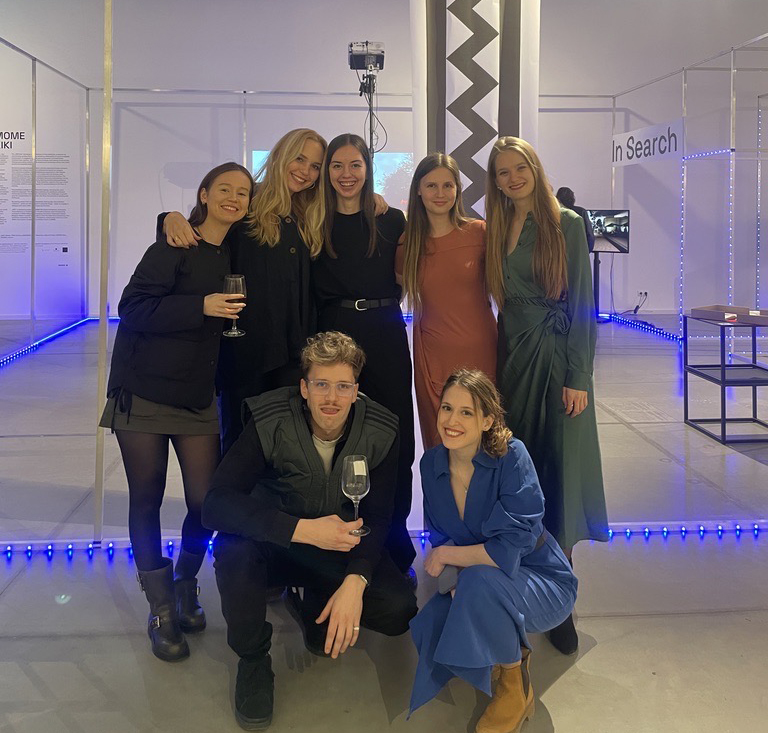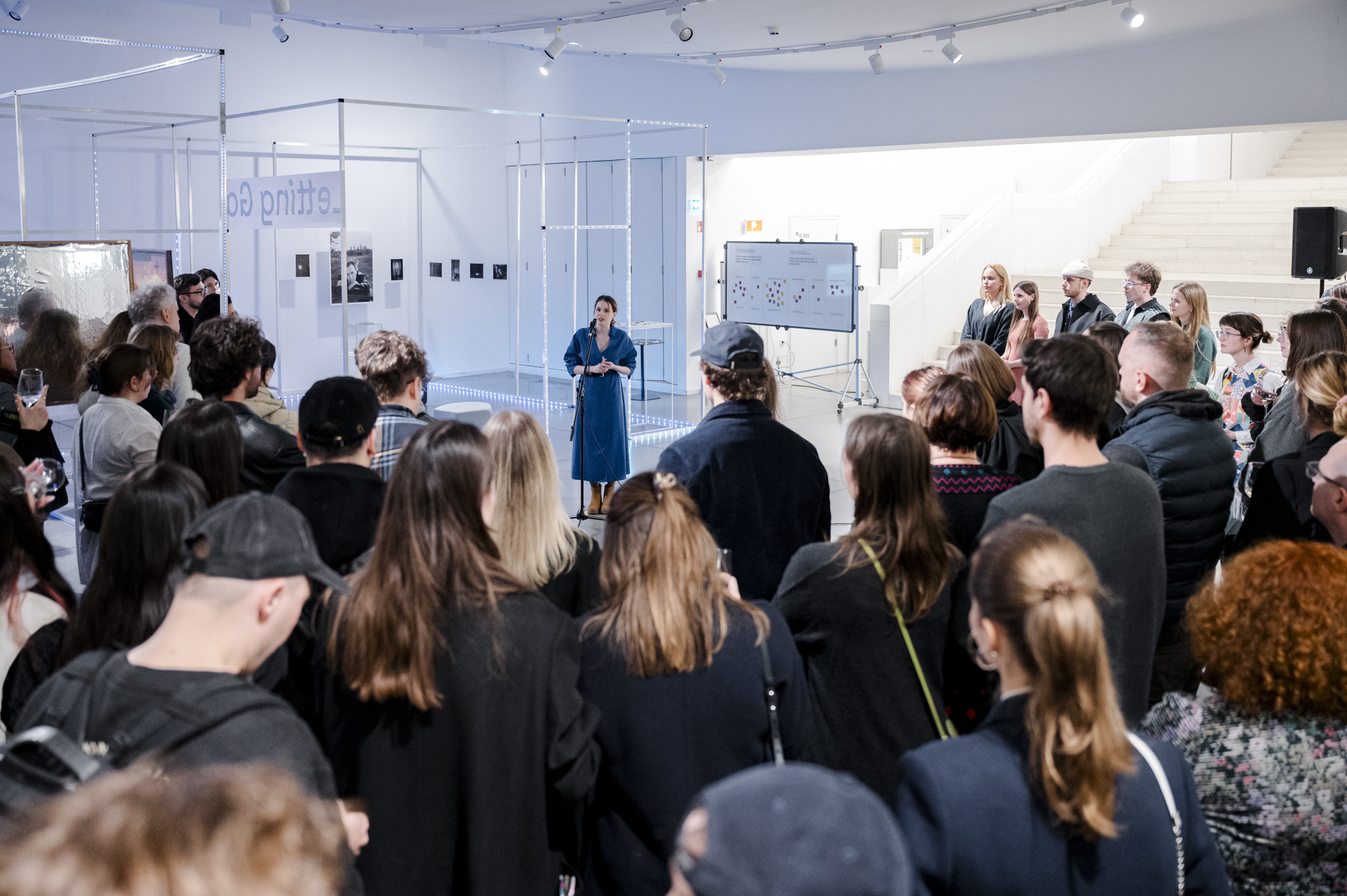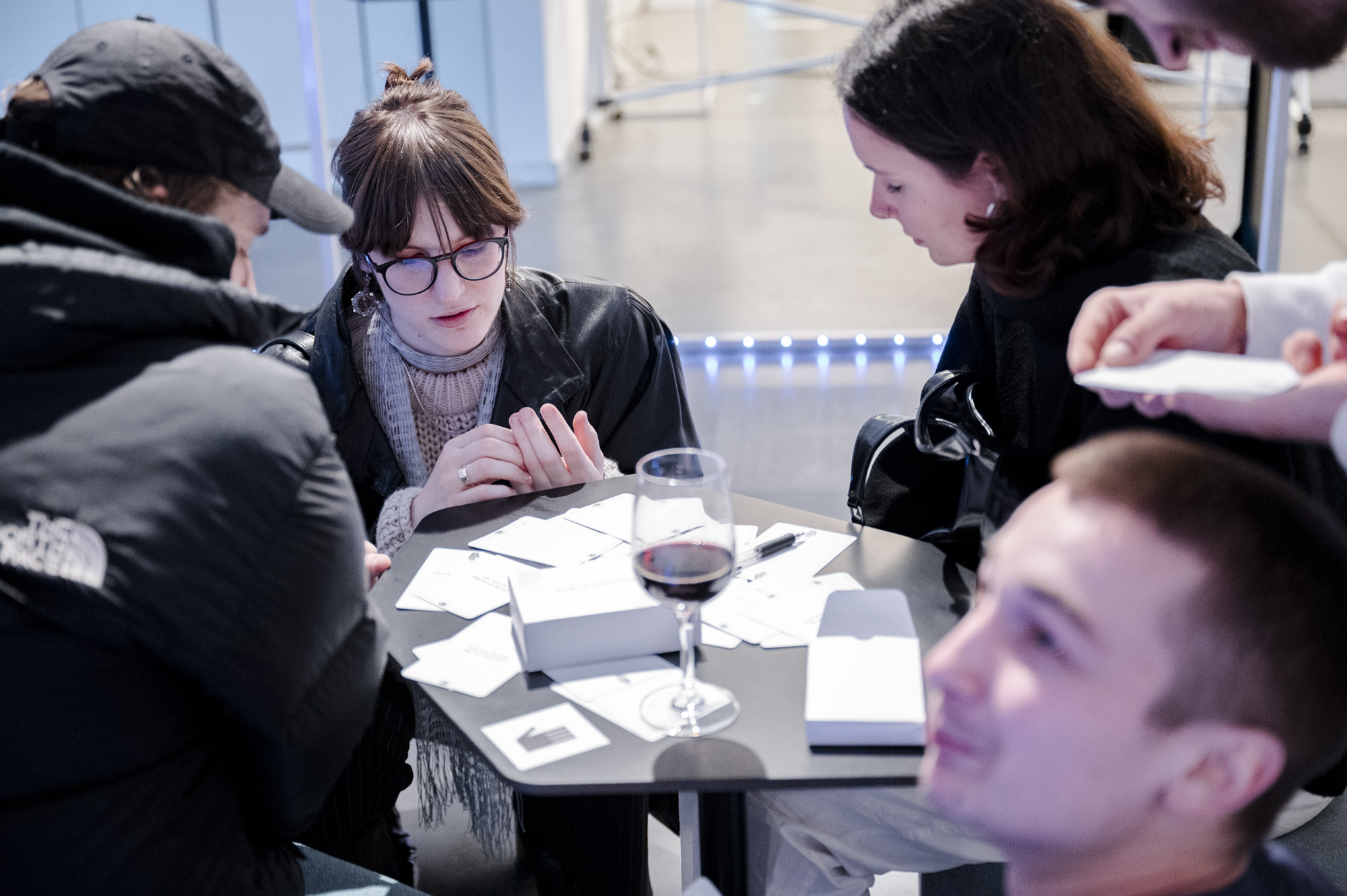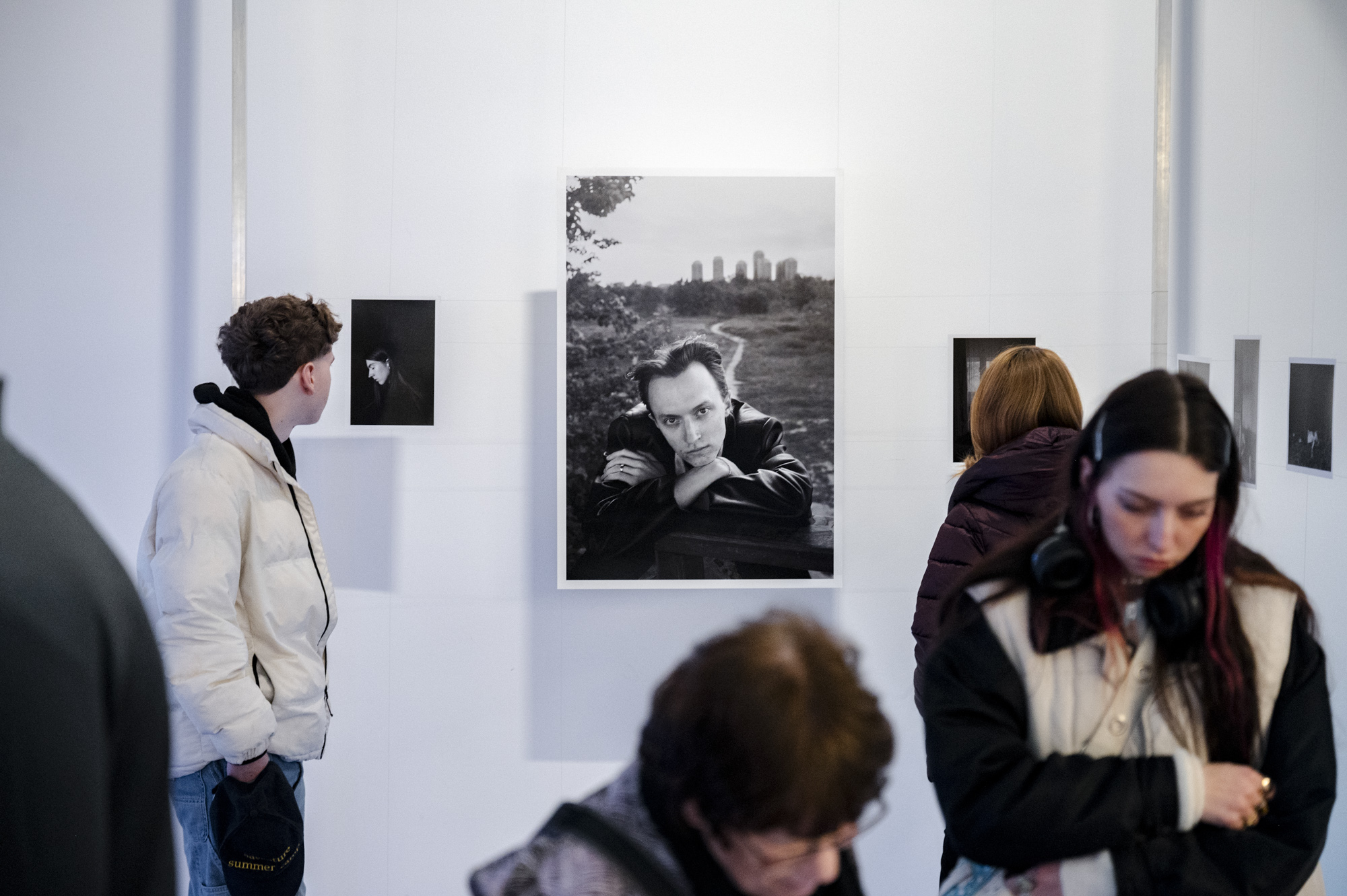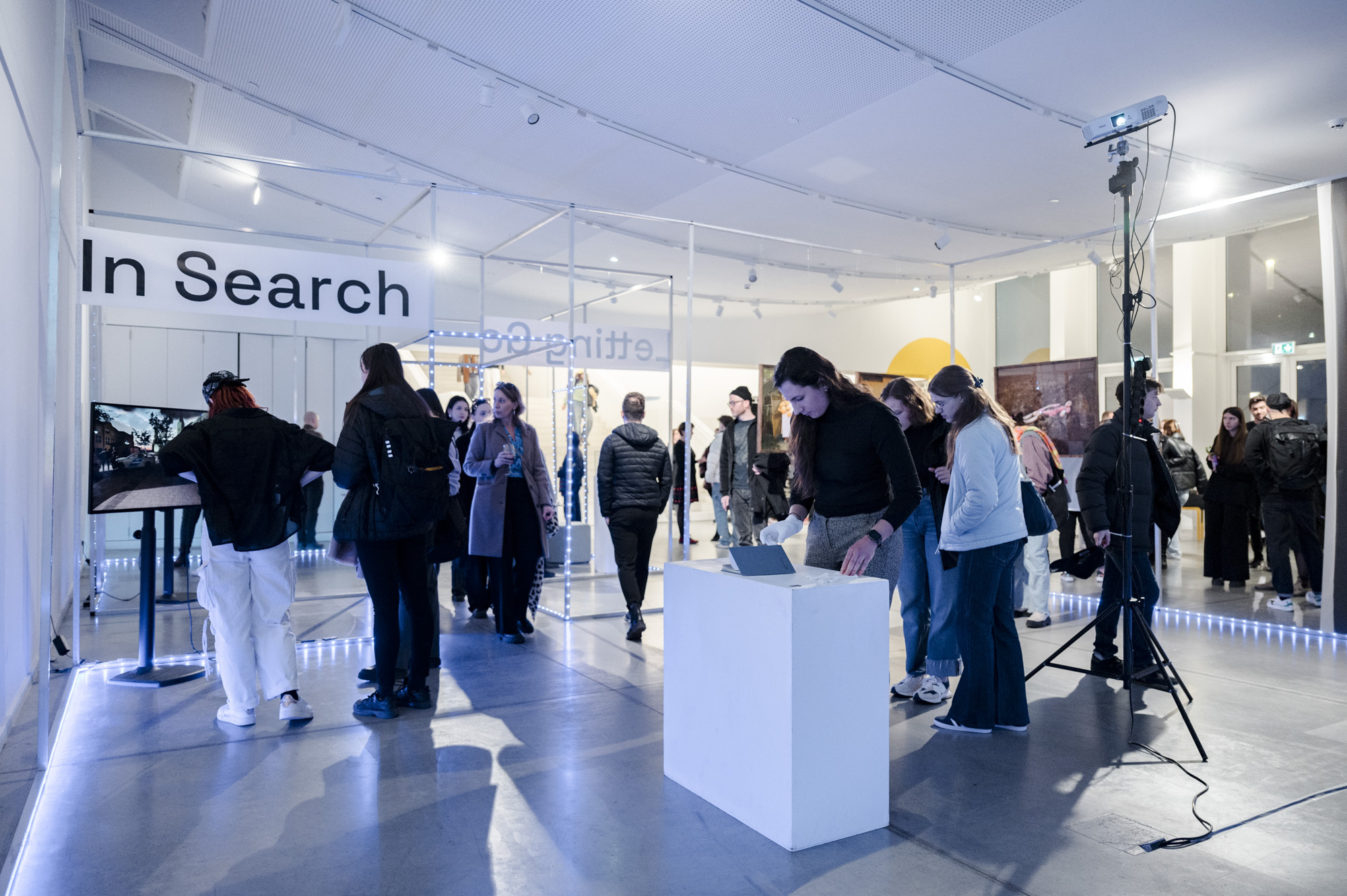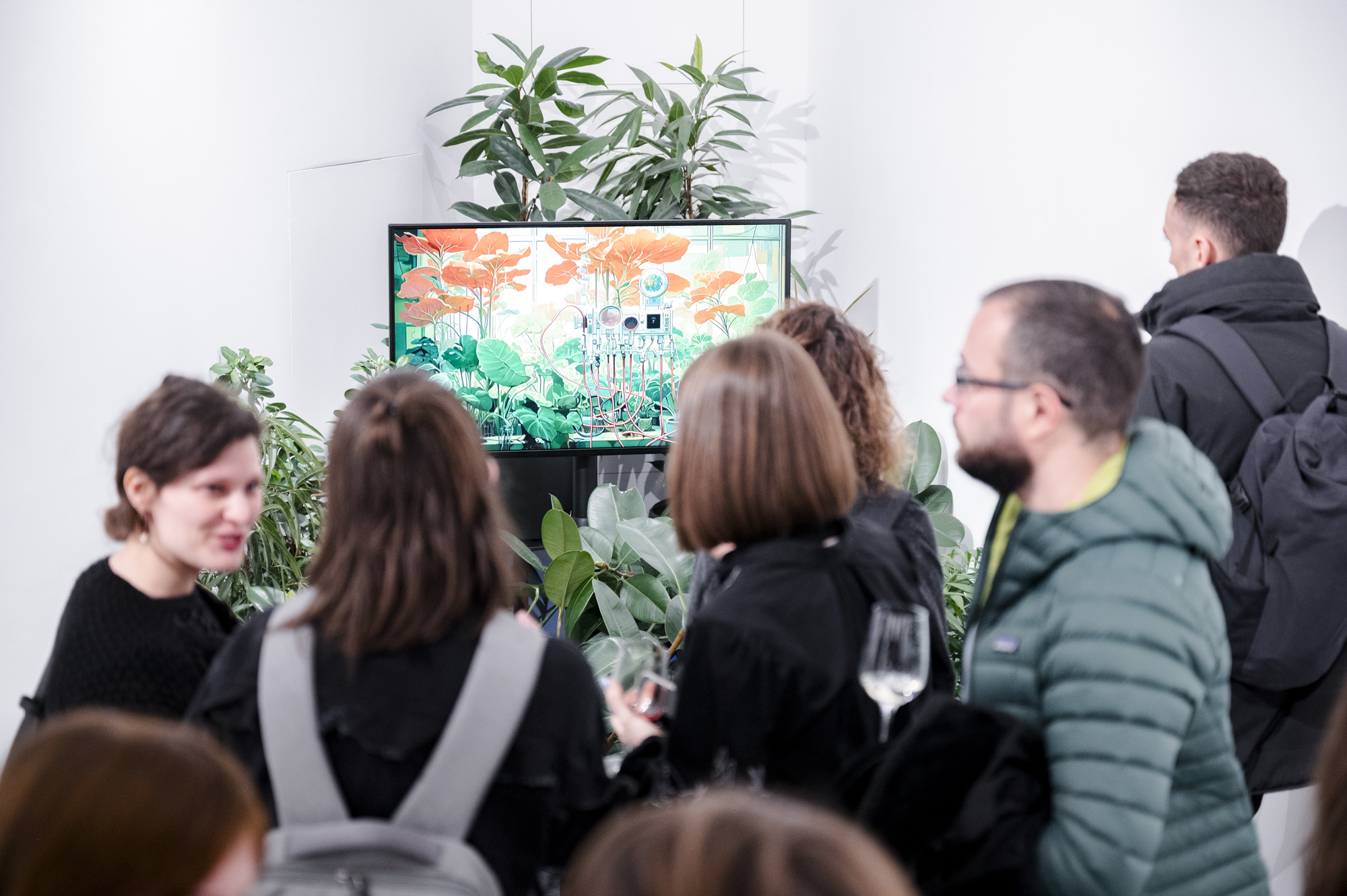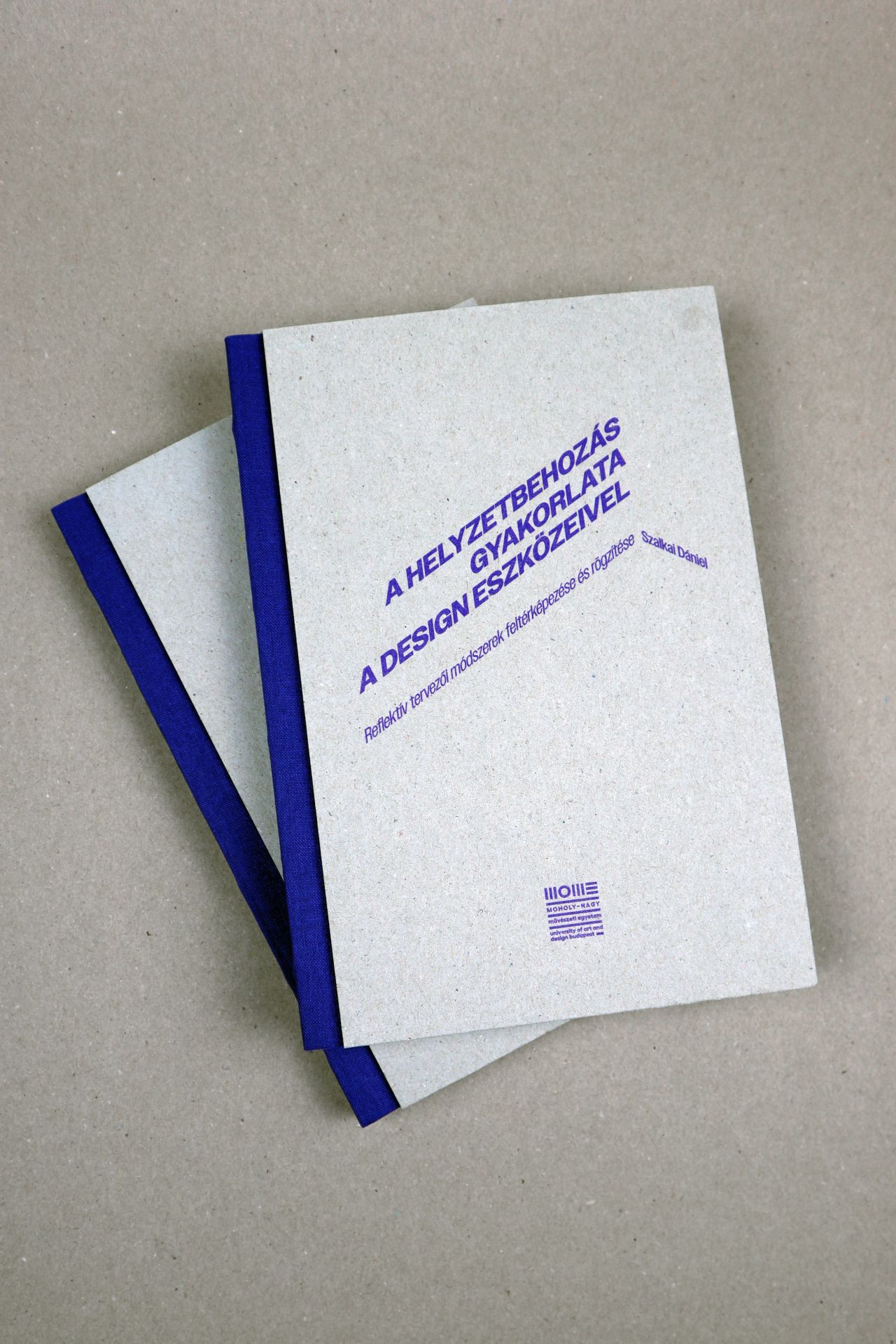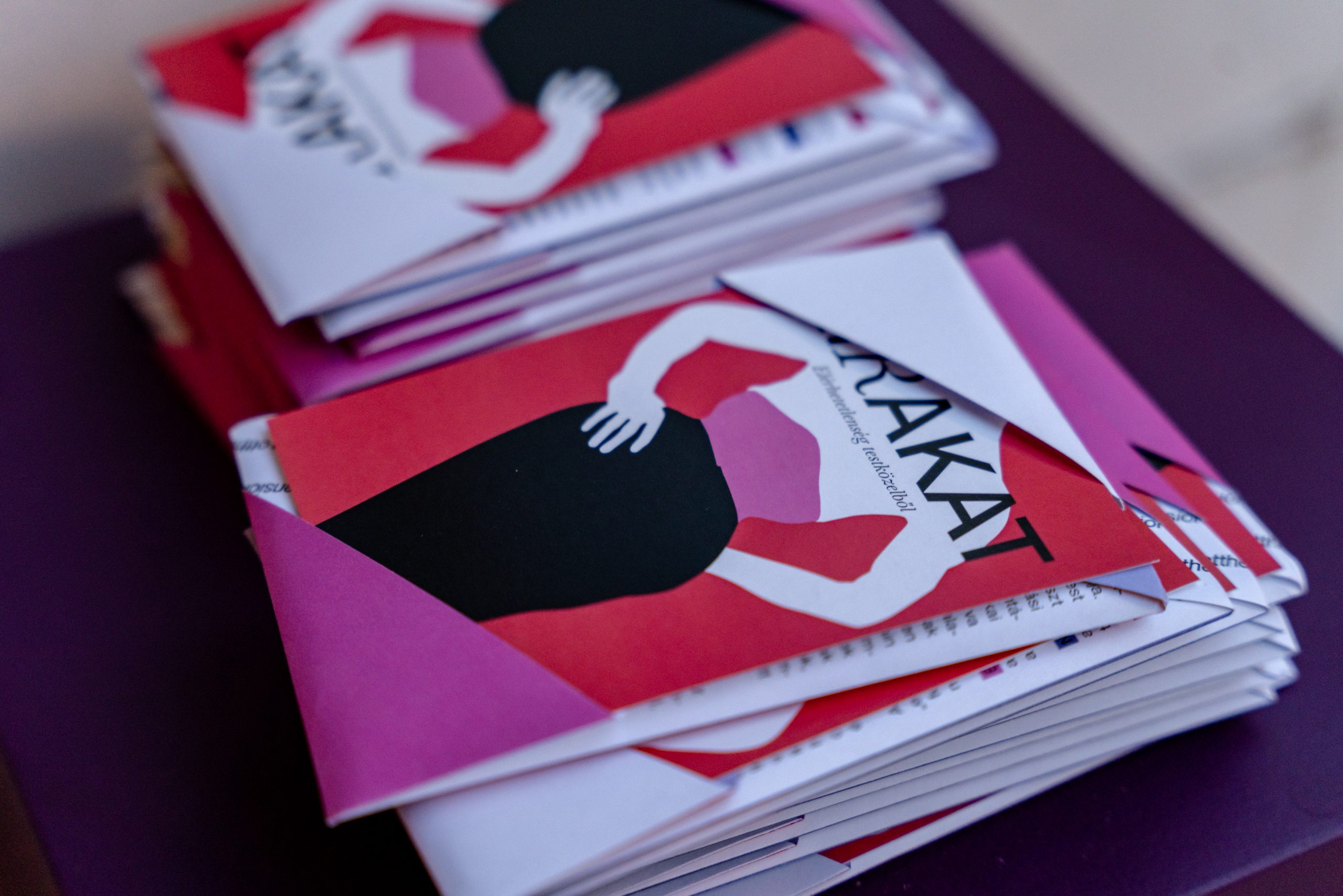
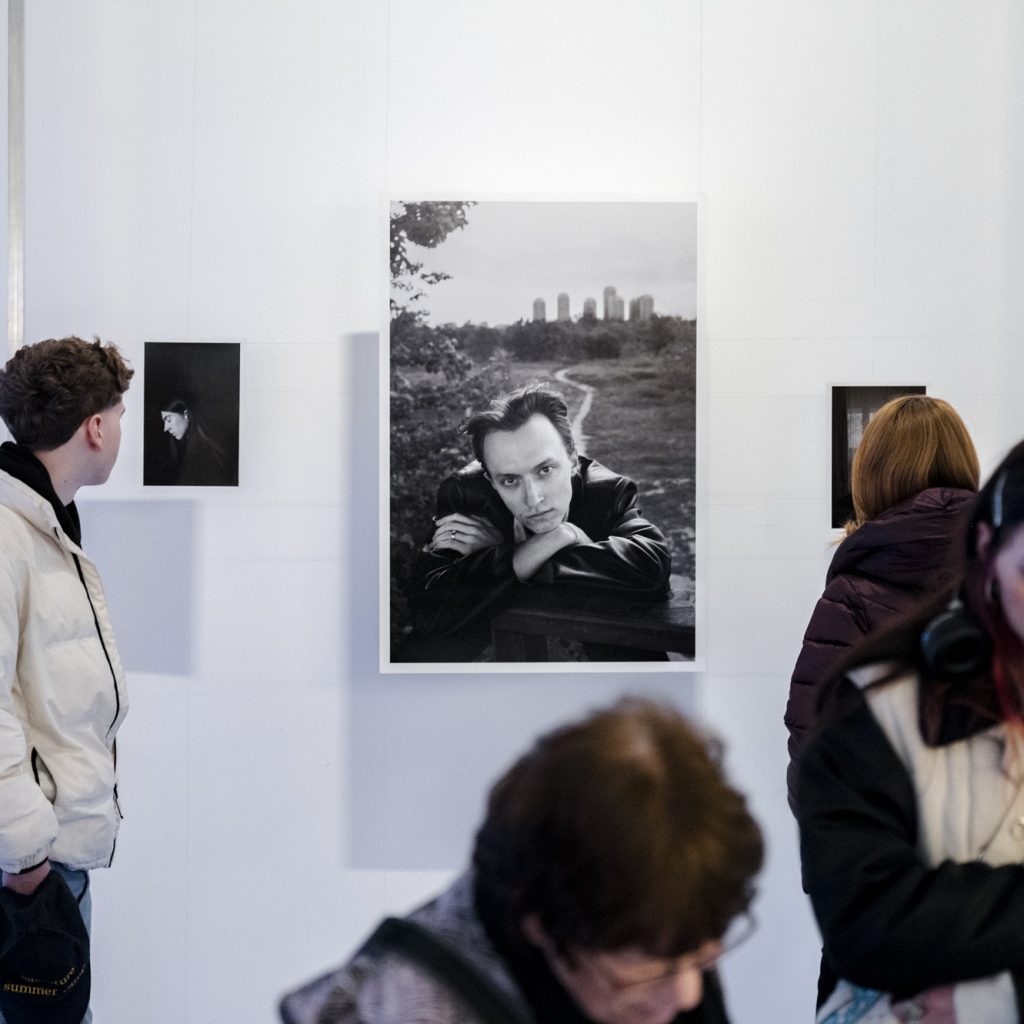
“It needed to come out” – Interview with the MOME KIKI managers
There’s no such thing as too much exposure for design works and student collaborations, especially in the small, financially not very padded cultural scene offering precious few entry opportunities for emerging designers. The sooner a young artist gets university-wide and general publicity and can be put into contact with players of the cultural circuit, the better they can stand on their two feet after the academic safety net has been pulled from other them. This was the guiding philosophy behind the creation of the MOME KIKI, a.k.a. the Kipak Kiállítás (End-of-Semester Review Exhibition) by Art and Design Management MA students Teodor Bárány and Natasa Tereh. We asked them about their recently implemented project that also received the Erika Deák Grant in a split.
The team of MOME KIKI
In addition to MOME KIKI, there are already some institutional initiatives providing exposure to design students, such as the Kipak Festival or the MOME Fair. What need has brought about the Kipak Kiállítás?
Theo: Most importantly, KIKI creates an overlap between the individual fields. In particular, it helps management students work together more often, more organically, and later, in institutionalised form, with design students. We want to support this communication collaboration, while providing exposure for design students’ works.
Nati: We got to talking at our joint courses, and apparently it is a recurring issue for them to be working for 6 months on their projects only to have them on display at the KIPAK for just one or two days. They miss being able to present their projects in a more organised setting and to a wider audience. And we as managers felt that it was our job to represent the students and their programmes.
As a result of the nature of these student projects, most of them are still at a ‘work in progress’ stage. Why can it be still worthwhile to include design works that haven’t reached their final form yet in the exhibition?
Theo: This work-in-progress character shows what is going on right now at the university, helping explain what MOME is about to those interested. Someone dropping in to see our work can get inspiration from it or realise that they would also be able to make something similar. So ultimately it can motivate those to apply who otherwise might be scared of not being good enough.
Nati: We were also thinking about how to shrink the gap between the university and the outside world. For students not attending an art school, KIPAK is an insider colloquialism, which they don’t get. MOME often seems like a dream world, which is why we wanted to start the process of outward communication. We wanted to get people to see what’s going on here, who the students are, and what these works are. It was also important to get students’ projects out there before graduation to start giving them exposure and help them build contacts that could be called upon later.
From the get go, we wanted to make MOME KIKI professionally relevant, something that students can be proud to say they were a part of.
What kind of target audience do these diverse considerations add up to? It makes a lot of sense to want to present student works to the general public, yet the exhibition is located at a relatively out-of-the-way corner of the city in Zugliget.
Nati: Our primary target audience was the professional community that could be useful for the exhibitors, such as gallerists and Gesamtkunst thinkers. Next came Theo’s idea to apply for the Erika Deák Grant, which ultimately helped us broaden our reach. The grant was also important because it was validation from Erika that ours was a solid project. Although our proposal involved an external exhibition location, Erika suggested organising the first KIKI on university grounds on a pilot base, because the buildings have some unexploited spaces that could be home to the exhibition. In any case, we wanted to reach those interested in culture, and instead of narrowing this circle down by age, we decided to use different social media channels to reach them. So we created a Facebook and an Instagram page. The latter had posts with a more serious tone and professional content, and the stories had behind-the-scene and funny posts. We asked Barna Turai to open the exhibition, a move which was directed at our own age group, but at the same time, we sought to reach out to other generations with Erika Deák’s help.
Theo: I would like to add that we wanted to add a bit of progressiveness with the dance and music performances at the opening in an attempt to attract younger generations who might have found the cold and austere white cube setting a little alienating.
Nati: Theo, our other chief organiser Vivi Villám, and I soon began to wreck our managerial brains to come with a concept that is not only professionally sound and well-structured but also marketable – to make sure it would be a cool event, and would look good on photos and in stories, because it’s an important consideration. We worked out a great deal: music, dance performance, and so on to make it stimulating in other respects beyond the professional content and make it worthwhile to stay at the opening. We succeeded – it went on until 9 p.m. and we could hardly get the people out.
You selected works by students from Master’s programmes switching to English from this year – Design, Photography, Interaction Design, Animation and Designer Maker. Why these in particular? Wouldn’t it have been a better idea to provide every programme with the opportunity to present their work?
Theo: To give you a diplomatic answer, we needed to position the project within the university in a way to ensure it can actually be realised. Also, we did not want to get in over in our heads with the first exhibition, and so we were forced to limit the programmes selected. We screened them to find the ones that fit the exhibition strategy the best, and because of the internalisation of the university, the programmes taught in English language seemed like a good choice. Regardless, in the future we want to work together with others too.
Nati: Very importantly, we wanted to forge a community and because the Art and Design Management programme will switch to English in September, picking the English language Master’s programmes was also intended as a gesture. They include some very fresh ones, such as Interaction Design, which haven’t gotten so much attention. The overall experience with the KIPAKs is that many of them take place at the same time, and so it is impossible to see every one of them. We went to see the exhibitions of the various programmes, and sometimes our team needed to split up because there were just too many to see, and as a result, the focus was also split. We were thinking that the only way to give enough focus to each student work featured is to limit their amount. Consulting with the head of programmes helped, discussing which works could be representative, or which ones didn’t get the attention they needed. So we received the names of four or five, sometimes six students to choose from.
The exhibition featured design works exploring coping mechanisms for anxiety – method 333 – in a variety of ways. Why did your concept address this subject specifically?
Nati: The choice of theme was a complex process. Theo and I collected and developed the themes we found interesting back in September, so we had ideas on the approach we preferred. For example, we have read the course description for the selected programmes to find out what the students were involved in during the semester so we could think ahead. Later on, first year management students Juli Bálint and Fanni Baranyi joined the team and we went to see the KIPAKs with them. We encouraged them to come up with a concept that is daring, disruptive or shocking even. Our curators very quickly realised that a great many works were centred around anxiety, which sparked off endless brainstorming for ideas and titles. What soon became clear is that the concept would be built on these frustrations and potential resolutions, for which Juli ultimately came up with the idea of the rule of 3.
Theo: There were some dissenting voices, but I feel this was a fundamentally good choice, because this is what you could see from the works. Our job is to show what the artists, the young upcoming generation is interested in here at the university, and they often choose to focus on taboo subjects such as aging or death.
It is my impression that our generation is shrouded by a veil of hidden depression, a kind of anxiety that we can see in the eyes of each other but are unable to share with each other because everyone is trapped in their own reality. I feel that this needed to come out – it would have been unconscionable to just go like hey, let’s just pick a more cheerful subject.
So instead, the question was how to dress up the issues. 333 is a sort of stimulating method that helps relieve anxiety, so we figured it would work with the concept.
It is indeed not a good idea to slip into self-censorship. Moreover, works like this featured in the exhibition can go a long way towards starting a discussion. These were arranged into three units in the exhibition to fit the rule of three: harmony between man and their environment, the individual’s search for identity, and grief and letting go. How did you end up with these three subjects when developing your concept?
Theo: Our curators put together the projects on a Miro board and started grouping them according to various buzzwords. This time, we needed to create a concept based on the existing works, but perhaps next time we are going to be more creative and pick works to fit our own concept. For our first exhibition at least, we didn’t want to have our own hands tied, and also didn’t want to influence the works themselves.
Nati: To Juli, our curator, it was important that the selection should not feel contrived, in other words, that instead of being shoe-horned into the theme the works should fit nicely into it. Another exciting part of the process was when Juli and Fanni visited the students, telling them they liked their works and asking for more materials, only to be told by many of them that they only had one drawing or 3D design. The girls told them that it would not be enough and so the students had to do some extra work on their KIPAK projects. Juli also ran a tight ship: when Theo and I suggested additional projects we liked, she refused to include them because she didn’t feel they fit the concept and would have made it seem forced. They did an incredibly precise job, even developed a roadmap for the spectator to follow to start their internal journey, proceeding from a slightly more general topic towards the deepest and most personal thoughts and feelings. An interactive wall was placed at the end of the exhibition where you could use KIKI stickers to indicate what type of issues you would like to solve first, in an attempt to ease the mental state the spectators might develop by the end of the exhibition.
Though the experience is perhaps still quite fresh for you, can you already see any lessons to draw or future opportunities for KIKI?
Nati: In the beginning, we pictured KIKI like MOME Fair, meaning when we feel we aged out of it, or no longer have so strong ties to the university, then we’ll pass it on to the next generation of managers.
We are graduating this year, but this plan still feels like having our baby taken away, we are just not ready for it yet. We have become more attached to it than planned, but at any rate we want it to grow into a regular, premium Gesamtkunst event that students, teachers and gallerists and collectors dealing with young artists can rely on.
Theo: We can see a lot of lessons already, all of them things we would have gone about more cautiously had we been more experienced. I can think of many things: we should have been thinking and planning further ahead, developed and sent pitches to sponsors and created the event sooner. One of the greatest benefits of the exhibition is that I managed to build pretty good rapport with the designers. Bottom line is, you need to hustle to achieve what you want.
Nati: This is exciting because our team had never done an exhibition before. Juli had worked as a curator before, but not as chief curator, and Vivi had not organised an exhibition before. Our social media manager Flóra Lukovics had not developed an entire social media presence before. Our graphic designer Timi Varga had never before developed an entire visual identity, and yet she put together everything from the colour scheme to the Instagram feed and the logo. Another important lesson was how to handle situations diplomatically – how to communicate with artists, or what to do when we are about to enter into a contract with someone but in the end turns out we can’t. It was another huge realisation that if we want to reach or get someone for the exhibition, all we need to do is make a call. So many things worked out for us this way, from Hilltop and Sauska to Pataki Cukrászda and our performer lineup. This exhibition organising business was totally virgin territory for us, and allowed us to learn a great deal together.
// /
The first MOME KIKI was displayed at the Moholy-Nagy University of Art and Design between 16 and 23 February 2024.
Project managers: Teodor Bárány, Natasa Tereh, Vivien Villám
Curators: Fanni Baranyi, Júlia Bálint
Exhibiting artists: Adi Tudose, Péter Bunford, Anna Gajewszky, Diana Hubska & Tetiana Tarenkova, Míra Majoros, Balázs Nagy, Viktória Pere, Diána Rakonczai, Eszter Szalay, Sára Szeredi, Hunor Tóth, Domonkos Varga, Jázmin Zsurbej
Graphic designer: Tímea Varga
Social media manager: Flóra Lukovics
Sponsors: HILLTOP Winery, Zichy Birtok, SAUSKA, Pataki Cukrászda
Special thanks to: Erika Deák, Gábor Ébli, Kinga Germán, Dóra Juhász, Réka Tóth-Horváth, Zsófia Zubay, Szandra Csont, the MOME Brand Office, Institute for Theoretical Studies, the MOME Campus Board and other MOME supporting staff.
Photos: Máté Lakos
